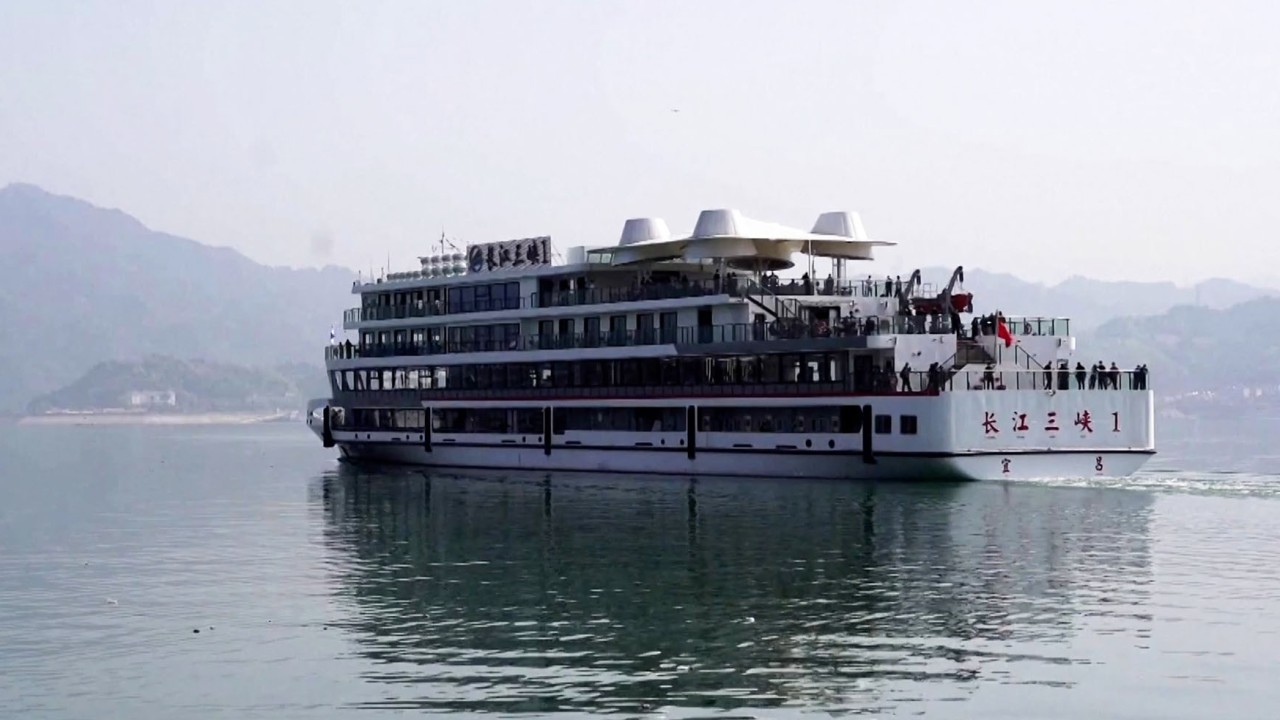
As China steers its ships onto an electric-powered course, Hong Kong has a porthole of opportunity
- The country is promoting electrification of the vessels plying its vast inland network of waterways, amid looming overcapacity in the EV battery industry
- With coastal ferries in the Pearl River Delta being heavy fossil fuel consumers, Hong Kong’s government could work with others in the region on a green transition for the sector
At the end of July, Cosco Shipping Development’s first fully-electric container ship, the 120m-long N997, capable of carrying 700 20-ft containers, was launched from Yangzhou Port.
It was not the first battery-powered cargo ship ever built. That honour goes to Norway’s Yara Birkeland, which was launched in 2021.
But Cosco’s vessel is likely to be the most significant. It is intended to operate along the Yangtze River as one of more than 100,000 passenger and freight vessels sailing throughout China’s 128,000km network of inland waterways.
An Asian Development Bank report in 2016 said China’s system of waterways, including river, coastal and ocean shipment, carried around half of the country’s freight. Its ferries, including coastal ferries, carried 273 million passengers in 2019. According to the International Council on Clean Transportation, the inland waterway shipping sector accounts for about 15 million tonnes of carbon dioxide emissions.
So it is perhaps long overdue that China has begun to turn seriously to electrification of its vast inland waterway fleet. According to a report in May by Sealand Securities, battery-powered vessels are expected to comprise around 21 per cent of all vessels on China’s inland waterways by 2030.
This will reduce not only carbon emissions but also sulphur dioxide and nitrogen dioxide pollution.
Modernisation of the inland waterway fleet is also aimed at taking hundreds of thousands of heavy goods vehicles off China’s roads. Norway’s Yara Birkeland was built for Yara, a major Norwegian fertiliser manufacturer, and meant to displace more than 40,000 diesel-fuelled truck journeys a year.
Since China began to get serious about greening its transport system more than a decade ago, most attention has perhaps inevitably been focused on road and rail transport. Ships, especially the smaller vessels operating along inland waterways, have been comparatively neglected.
Now Beijing has begun to pay particular attention to electrification of shipping for three reasons. First, the massive inland waterway infrastructure means that thousands of small cargo vessels and ferries operate into and out of dozens of large population centres, where their contribution to pollution has become increasingly problematic.
Second, original plans to switch the vessels from highly-polluting sulphur-heavy fuel to LNG have been frustrated by slow progress in building an adequate network of LNG filling stations along the waterways.
In 2012, China’s car manufacturers sold just 12,000 EVs. By 2022, this had grown to 6.9 million. While China’s EV production is expected to continue to grow strongly, the EV fleet will require between 1,000 and 1,200 GWh by 2025. However, the Chinese battery-makers supporting EVs are expected to have a production capacity of around 4,800 GWh.
While a car will on average require a battery providing around 100KWh of power, ship batteries will need 10 to 100 times more capacity. Today’s batteries are not only more powerful, but they can be modularised, allowing them to be used in a widening variety of vessels.
A number of European shipbuilders currently lead in the development of battery-powered ships, but no country has the combination of huge demand for electric-powered ships and the scale of battery supply that China has. Moreover, in China, regional governments – in Fujian, Hubei, Shanghai, Guangzhou and Shenzhen – are willing to provide funding support as large-scale production brings battery production costs down to commercially competitive levels.

Of particular interest in Hong Kong should be the interest in developing China’s battery-powered ferries. According to an International Council on Clean Transportation paper in 2021, electrifying all coastal ferry operations in the Pearl River Delta region would do away with over 30 per cent of the fossil fuel used by the country’s entire coastal ferry fleet in one month in 2019.
China had 209 vehicle and passenger ferries in 2019, and two-thirds of the total ferry traffic analysed in the study operated in the Pearl River Delta region, including the 85km Guangzhou-Hong Kong and 63km Macau-Hong Kong routes. The study found that 95 per cent of ferries in the Pearl River Delta region could economically adopt battery power.
So far, our government has been either silent, or unaware, and it is time to get off our haunches.
David Dodwell is CEO of the trade policy and international relations consultancy Strategic Access, focused on developments and challenges facing the Asia-Pacific over the past four decades



.jpg?itok=iQz726J3)